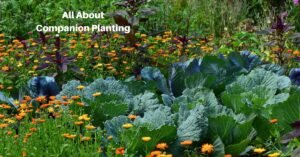Swiss chard, with its vibrant and nutritious leaves, can bring a burst of color and flavor to your garden. It’s a favorite of both seasoned gardeners and newcomers, thanks to its versatility and relatively simple cultivation process.
In this guide, we’ll take you through the essential steps for successfully growing Swiss chard in your garden. You’ll soon be enjoying this delicious veggie as part of many great meals, and it can continue producing all season long.
Seeds or Soil: Your Planting Choices
You’ve got two primary options for planting Swiss chard: starting seeds indoors or sowing them directly in your garden. The choice depends on various factors, including your climate, available space, and personal preference.
Starting Seeds Indoors
This method is ideal for gardeners in colder regions who want to get a jumpstart on the growing season. You’ll need seed trays or pots filled with a seed-starting mix. Plant your seeds about 1/2 inch deep and keep the moisture consistent. Once your seedlings boast a few true leaves, they’re ready for transplanting into the garden.
Direct Sowing
In regions with milder winters, you can sow Swiss chard seeds directly into your well-prepared garden beds. Plant the seeds about 1/2 inch deep and space them 6-12 inches apart, depending on the variety. You might need to thin them later to ensure enough room for mature plants.
The Art of Timing: Planting Your Swiss Chard
Swiss chard is a cool-season vegetable that thrives in moderate temperatures, making it suitable for both spring and fall cultivation. When to plant it depends on your local climate:
Spring Planting
In regions with cold winters, you might want to kickstart your Swiss chard indoors about 4-6 weeks before the last expected frost date. Once your seedlings have developed 2-3 true leaves and are robust enough, you can transplant them into the garden.
Fall Planting
If your area experiences milder winters, you can directly sow Swiss chard seeds in your garden from late summer to early fall, typically around 10-12 weeks before your first expected frost date.
Order Swiss Chard Seeds Online
Preparing Your Soil and Planting Your Swiss Chard
Swiss chard thrives in well-drained, nutrient-rich soil. Here’s how you can prepare the soil and plant your Swiss chard for success:
Location Selection
Opt for a sunny to partially shaded spot for your Swiss chard. While it can tolerate some shade, it performs best in full sun.
Soil Testing
It’s wise to conduct a soil test to determine the pH level and nutrient content of your soil. Swiss chard prefers a pH range of 6.0 to 6.8. If needed, amend your soil to achieve the ideal pH.
Soil Enrichment
Boost your soil’s fertility and moisture retention by incorporating organic matter, like compost or well-rotted manure.
Sowing or Transplanting
Following the directions we laid out above, sow your Swiss chard seeds directly into your prepared garden bed or transplant your seedlings. Make sure to provide ample spacing for growth.
Watering
After planting or transplanting, thoroughly water your Swiss chard to help settle the soil and encourage strong root development. Throughout the growing season, maintain consistent moisture since Swiss chard prefers evenly moist soil.
Mulching
Applying a layer of organic mulch around the base of your Swiss chard plants can help conserve moisture, regulate soil temperature, and keep pesky weeds at bay.
Tending to Your Swiss Chard
Swiss chard doesn’t demand too much maintenance, but a few key practices can ensure healthy growth and a generous harvest:
Watering
Swiss chard thrives with steady moisture, so aim to keep the soil damp. Providing about 1 inch of water per week, either through irrigation or rainfall, is a good target.
Thinning
If you’ve directly sown Swiss chard seeds, thin the seedlings once they reach a few inches in height. This step ensures proper spacing for mature plants.
Fertilization
Swiss chard doesn’t need excessive fertilization. A balanced, slow-release fertilizer applied during planting is generally sufficient. Be cautious not to over-fertilize, as this can lead to overly leafy growth.
Pest and Disease Management
Keep an eye out for common pests like aphids, leaf miners, and slugs. Combat them using organic methods or insecticidal soap when necessary. Swiss chard typically shows resilience against diseases, but maintaining good hygiene and crop rotation can further reduce risks.
Harvesting Your Swiss Chard
Swiss chard is a “cut-and-come-again” vegetable, meaning you can enjoy a continuous harvest throughout the growing season. Here’s how to do it effectively:
Leaf Harvesting
When your Swiss chard leaves reach a desirable size, typically around 6-12 inches in length, use sharp scissors or garden shears to trim the outer leaves at the base of the plant. Leave the inner leaves to continue growing. Regular harvesting encourages new leaf growth.
Whole Plant Harvest
Alternatively, if you prefer, you can harvest entire Swiss chard plants by cutting them off at soil level. This is typically done when the plants reach a more mature stage, and you want a larger harvest at once.
Additional Tips and Considerations
Here are a few more insights to enhance your Swiss chard gardening experience:
Succession Planting
To enjoy a steady supply of Swiss chard, consider sowing seeds in successive batches every few weeks.
Variety Selection
Swiss chard comes in various colorful varieties, each with its own unique flavor and appearance. Experiment with different types to find your favorites.
Overwintering
In milder climates, Swiss chard can often survive the winter months, providing you with fresh greens even during the coldest times.
Growing Swiss chard in your garden offers not only the satisfaction of gardening but also a source of delicious and nutritious leafy greens. With the right timing, soil preparation, and care, you can relish a continuous supply of Swiss chard leaves for salads, sautés, and various culinary delights.










